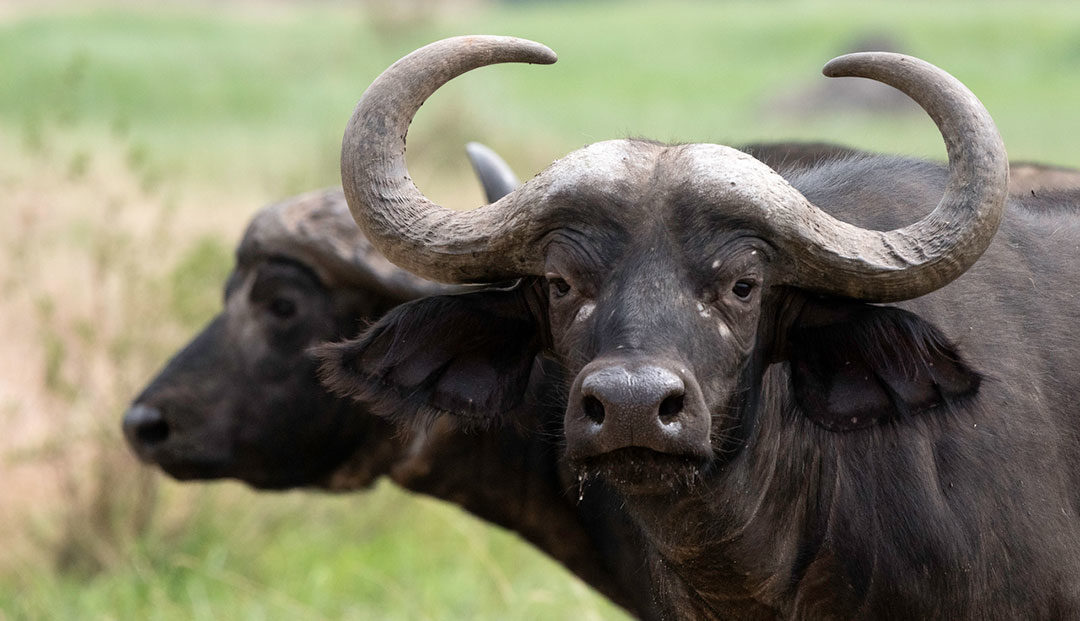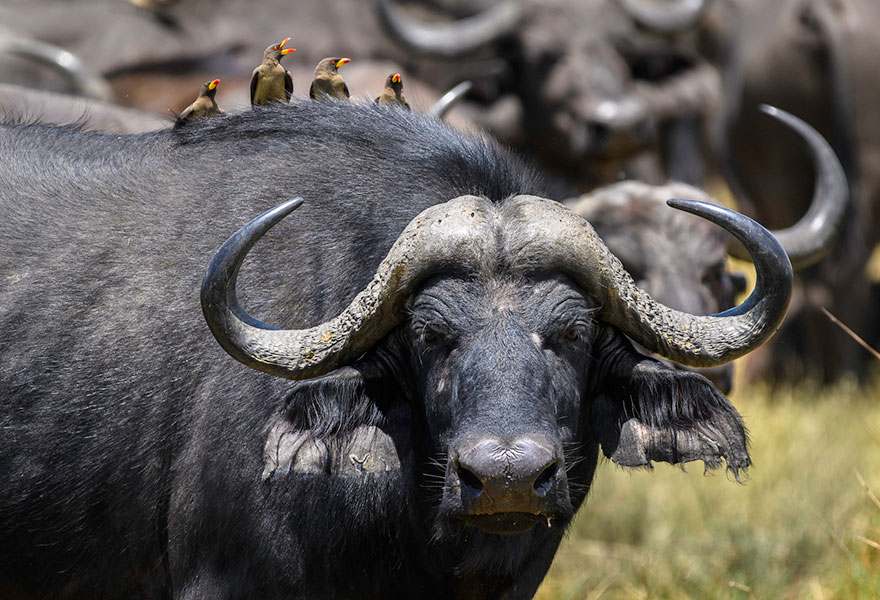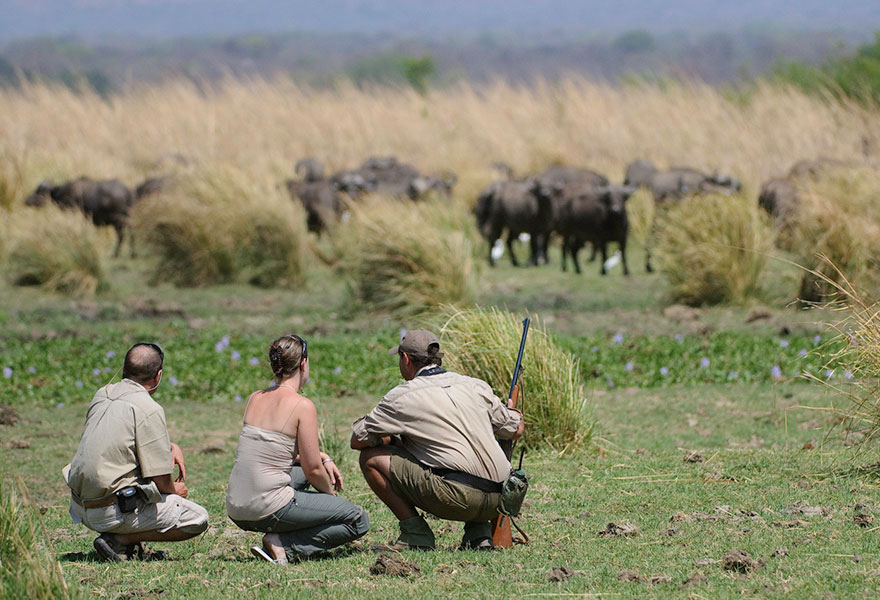Known for their large stature and aggressive nature, one of the most dangerous animals in Africa, the African buffalos forms part of the notorious Big Five along with the leopard, rhino, lion and elephant.
To bring you more information about Africa’s formidable beast, we’ve compiled a list of interesting facts about the African buffalo.
If you love learning about animals, don’t forget to check out our previous Animals Facts posts and learn more about the:
Interesting Facts About Buffalos
Species. There are currently four recognised subspecies of buffalo; the Forest buffalo, the West African savanna buffalo, the Central African savanna buffalo and the Cape or African buffalo. Each of these buffalo species varies significantly in size and appearance.
Habitat. The African buffalo’s habitats include open savanna grassland, areas in the dense bushveld near reeds as well as near waterholes, lakes and rivers. Buffalos need a good water supply as they love to lie in the water and roll in the mud to rid themselves of ticks and parasites.
Abilities. Despite their substantial stature, buffalos are capable swimmers and often cross deep water in search of better grazing. They can also run at incredible speeds of up to 57 km per hour.
Lifespan, weight and colour. African buffalos can weigh from anywhere 600kg up to 800kg and have an average lifespan of up to 20 years. The sparse hair on their body often ranges from brownish to reddish in colour.
Temperament. Buffalos are aggressive by nature and are known to be unforgiving. Buffalos have reportedly killed more hunters in Africa than any other animal. They are known to ambush hunters that have been wounded or injured them. The African buffalo has earned its reputation of being one of Africa’s most dangerous land animals.
Tactics. Buffalos have a silent and robust character. They aren’t fond of those interrupting their daily routine and are known to seek revenge on others. Buffalos have been recorded attacking someone years after being threatened by them. Another reason why they are known to be so dangerous is that they ambush their prey without giving any warning signal.
Tax collector. Buffalos are known for having a piercing stare. While on safari, as your game vehicle pulls close by, a buffalo will more than likely offer a lingering, unsettling stare. Once, on safari in the Sabi Sands, Sabi Sabi Private Game Reserve ranger Zwai referred to the buffalo as ‘the tax collector’ as this ominous stare was because you owed money.
Symbiosis. African buffalos have a symbiotic relationship with the oxpecker bird. The oxpecker sits on the hide of the African buffalo eating the parasites that live on the skin of the buffalo, making the buffalo more comfortable. The buffalo receives a clean by the oxpecker, and the bird receives a free meal from the buffalo.
Herds and Dagga Boys. In the Kruger National Park, herds of up to 500 buffalos can congregate, and in other parts of Africa, herds of more than 1000 animals can gather. Bulls sometimes form small bachelor herds, consisting of older and younger animals. If you spot a lone bull, it is probably a “dagga boy”. Dagga boys are older bulls that have past their prime and have separated from the herd.
View the buffalo on safari in Africa
If you’re ready to witness the formidable African buffalo as well as other members of the Big Five, book a safari in either the Kruger National Park, Botswana’s Okavango Delta or in East Africa’s destinations of Kenya or Tanzania.
Experience the thrill of driving through a buffalo herd, contact us to begin planning your dream safari in Africa.




